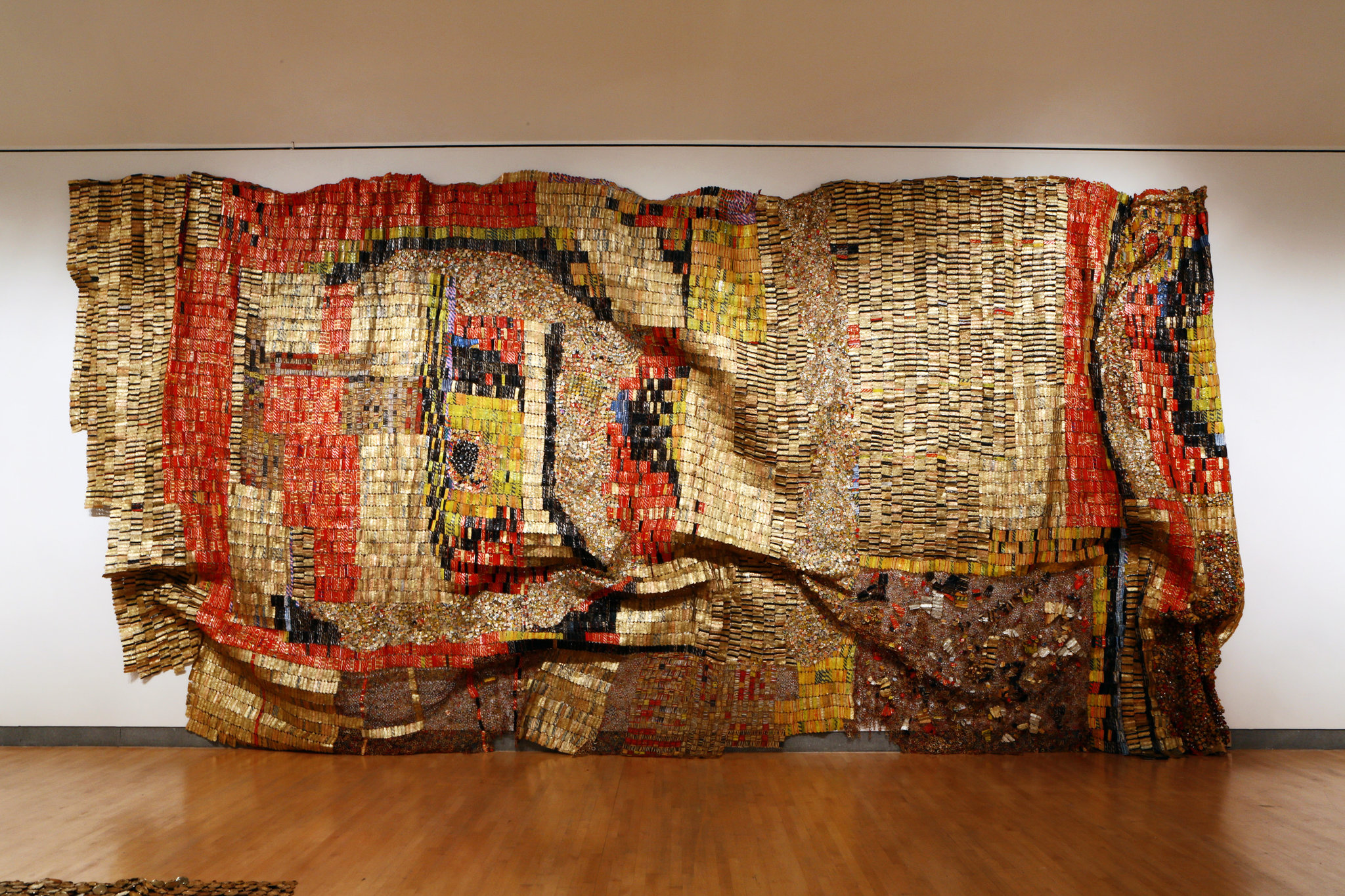Introduction
Art has always been a medium of self-expression and cultural storytelling, and as an artist hailing from a developing country, my inspiration often draws from the world around me—its struggles, triumphs, and traditions. Today, I want to introduce one of my favorite contemporary artists, El Anatsui, a visionary sculptor whose works have left an indelible mark on the global art scene. My discovery of his art at the 2019 Venice Biennale was transformative, sparking ideas that connect deeply to my own cultural heritage and artistic practices.
Discovering El Anatsui

El Anatsui is a Ghanaian sculptor celebrated for his innovative use of discarded materials to create breathtaking works of art that transcend categories. Born in 1944 in Anyako, Ghana, he has spent much of his illustrious career in Nigeria, where he teaches and creates in studios based in Nsukka, Enugu, and Tema. Anatsui’s ability to transform everyday materials, like bottle caps and cassava graters, into monumental sculptures that explore themes of colonialism, consumption, and environment is unparalleled. His works are a testament to the power of transformation—both of materials and of perspective.
When I first encountered his shimmering metal sculptures at the Venice Biennale, I was struck by their immense scale and the stories they seemed to whisper. They spoke of history, resilience, and interconnectedness—values that resonated with me as I reflected on my upbringing in Chittagong, a coastal region with its own rich tapestry of traditions and challenges.
A Personal Connection to His Work
Growing up in a small village in Chittagong, I was surrounded by vibrant traditions tied to the sea. Fishing is a way of life here, and women in my community weave fishing nets to support their families. My personal inclination, however, leaned toward knitting and stitching, crafts that I found meditative and expressive. The idea of reusing materials, creating something beautiful out of the discarded, always intrigued me.
Inspired by Anatsui’s use of recycled objects, I began collecting discarded cans from roadsides and pathways. I cut and shaped these cans to create a colorful curtain, much like the shimmering metallic tapestries that define his work. This process felt deeply fulfilling—it was as though I was weaving not just materials, but stories, memories, and a sense of place into the fabric of my art.





The Legacy of El Anatsui
El Anatsui’s journey as an artist is as inspiring as his works. Born to a family of weavers, he grew up with an innate understanding of the power of textiles and patterns. After studying at the Kwame Nkrumah University of Science and Technology, he embarked on a teaching career at the University of Nigeria, Nsukka. Here, he became a central figure in the Nsukka Group, a collective focused on integrating traditional African art forms, such as Uli and Nsibidi, into contemporary expressions.
His exploration of discarded materials began as a commentary on waste and the environment but evolved into something much larger. By using bottle caps and other remnants of consumer culture, Anatsui creates pieces that challenge viewers to consider the histories and identities embedded within these objects. These materials, imbued with the touch of countless hands, bring their own stories to his works, which can interrogate colonial histories or celebrate communal resilience.





Lessons for My Own Practice
What sets Anatsui apart is his approach to art as a fluid, ever-changing process. His sculptures, though intricate and labor-intensive, remain flexible and adaptable. He encourages curators to reshape and reinterpret his works with each installation, reflecting the mutable nature of human experiences.
This openness inspires me to embrace imperfection and fluidity in my craft. Just as Anatsui’s installations take on new forms with each exhibition, my art evolves as it engages with different spaces and audiences. His practice also reinforces my belief that art can bridge the personal and the universal. Through my own use of recycled materials, I strive to tell stories that are deeply rooted in my culture yet resonate beyond borders.
The Cultural and Environmental Impact
El Anatsui’s influence extends far beyond the art world. His works are housed in prestigious collections, from the British Museum to the Smithsonian Institution, and he has received numerous accolades, including the Golden Lion for Lifetime Achievement at the Venice Biennale in 2015. More importantly, his art challenges us to rethink our relationship with materials, consumption, and waste.
As an artist from a developing country, this message is particularly poignant. In regions like mine, where resources are scarce and waste often accumulates unchecked, finding beauty and meaning in discarded objects feels both urgent and empowering. Anatsui’s works remind us that recycling isn’t just an environmental act—it’s a form of storytelling and cultural preservation.
Conclusion
El Anatsui’s journey from a small Ghanaian town to international acclaim is a powerful reminder of the transformative power of art. His ability to turn discarded materials into awe-inspiring sculptures speaks to the resilience of the human spirit and the boundless possibilities of creativity. For me, his influence has been profound, inspiring not only my choice of materials but also the themes and values that underpin my work.
As I continue to explore my own artistic voice, I remain deeply grateful to El Anatsui for paving the way and showing that even the humblest materials can hold immense power and beauty. His art is a call to action—a reminder that, no matter where we come from, we can create works that speak to the world while staying true to our roots.


Leave a Reply